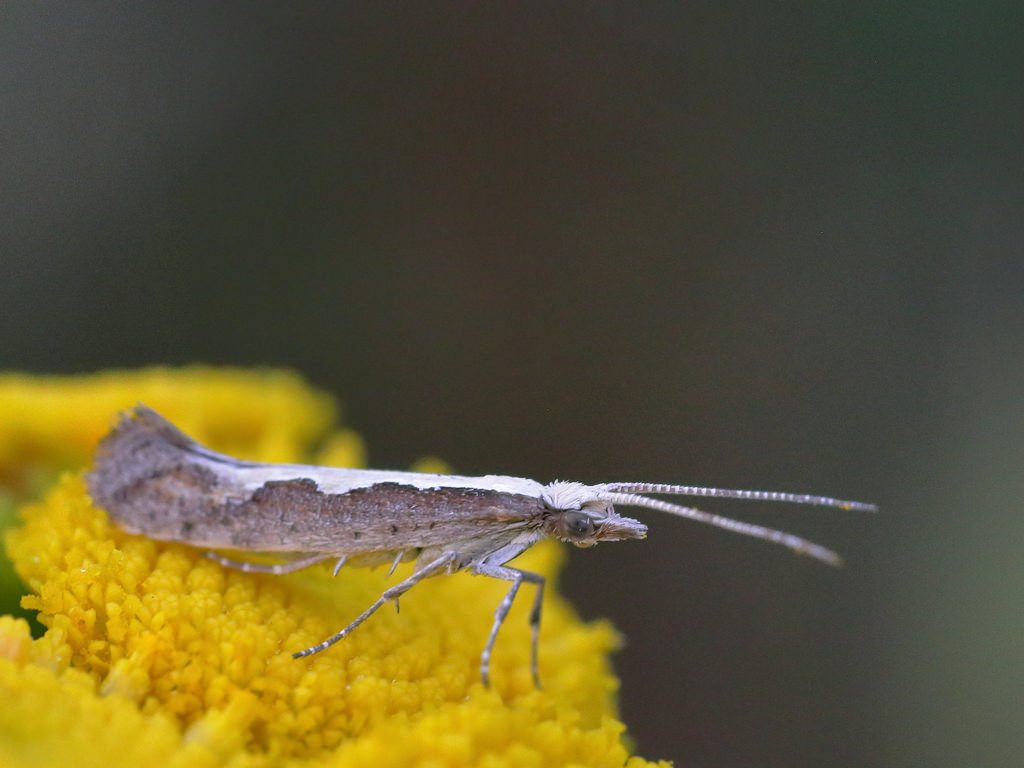The latest round in the battle over genetically modified organisms is heating up and, unlike the flap over genetically modified salmon—which revealed gaps in the way that United States regulation responded to changing techniques of genetic engineering, the current one seems focused on a deeper and harder-to-fix issue: the fact that government regulators and opponents of genetically engineered organisms fundamentally disagree on how safety questions are to be resolved.
The latest case involves a major worldwide insect pest, the diamondback moth (DBM), whose larvae do billions of dollars’ worth of damage each year to crops of the genus Brassica: cabbages, turnips, mustard greens, and their many relations. To combat them, the British company Oxitec has developed a line of genetically engineered DBM intended to interfere with the moths’ reproductive cycle. The moths carry a gene that causes female larvae to die off, while males grow to maturity—and the ability to infect a new generation of females with the gene. Over multiple generations of this “female lethality” approach (a couple of months in caged trials), the DBM population is effectively wiped out without the use of pesticides. Researchers at Cornell have tested the approach in laboratory and greenhouse tests, and most recently a trial in large outdoor cages. Now they want to proceed to an experimental outdoor release, and the United States Department of Agriculture (USDA), which seems to have authority here, has tentatively given its OK, pending the public comment period, which ends Friday.
You can see USDA’s evaluation of the program here, and perhaps the most complete critique of releasing DBM moths, courtesy of GeneWatch UK, here. If you read them both, you will frequently feel like you’re hearing about two different and utterly disconnected worlds. In USDA’s world, researchers have subjected the moths to testing and determined that the genetic alteration creates no known allergens or toxins. In GeneWatch’s, we just don’t know what will happen if birds or insects eat the moths, or if farm workers inadvertently swallow them during release, and it’s possible that consumers may be harmed by eating vegetables contaminated with the bodies of dead genetically engineered (GE) DBMs. In USDA’s report, the adult moths are sluggish little guys with feeble wings. They don’t eat, they tend to stay in one place, and they can’t survive the winter in upstate New York, which means they can’t spread out of control. Or maybe they’re like the GeneWatch paper describes, carried by the wind for hundreds of miles and (in at least one reported case) making it through to spring.
It’s hard to know what to think. Could there be some harm to eating a GE DBM? It seems unlikely, and even if there are rare reactions, wouldn’t most of us wash the bugs off before eating them—the way we’d try to wash off the pesticides, organic or synthetic, that would be used on the crops otherwise?
Actually, scratch that “otherwise.” DBMs aren’t the only critters looking to ravage your cauliflower. How are we going to control the cabbage root maggot or the flea beetle, or the rest of the insect crowd? They’ll still be around. Indeed, as GeneWatch UK warns, without the DBMs, they might seize the opportunity to become a bigger, harder-to-control pest.
Round and round and round we go. And the fact that Cornell is filing an application for a field test rather than a product launch doesn’t make it any easier. Would the GE DBMs really cause other pests to become more aggressive? If we don’t know, it’s partly because that’s the sort of thing you find out in a field trial. And while GeneWatch is absolutely right that what Cornell is proposing doesn’t look like good integrated pest control—which means that it wouldn’t necessarily reduce pesticide use—the test is ostensibly to find out how well the female lethality approach works. It isn’t necessarily going to tell us how modified moths fit into a pest control program for cauliflower, or whether the approach makes economic sense, or how farmers can weather the early period of treatment, when it appears that there will be more moth larvae in the fields than would have been there otherwise.
And if you want to be realistic, GeneWatch is probably right to assume that Oxitec wants to move as quickly as possible from field test to product. It would be foolish to wait to raise practical questions—even unanswerable ones—until later.
Here’s a complaint and an observation. First the complaint: The debate over the DBMs is proceeding as if we actually had principles in place for making a decision. As a result, both sides feel free just to show how their case fits the “rules.” But we don’t have a workable set of rules. We don’t need to know just who wins this battle. We need to get some clarity on what we’re battling over. The process in this case doesn’t seem to be serving the public interest very well, despite what looks like a lot of good intentions on more than one side of the debate.
And now the observation: I know that many in the food movement believe in the precautionary principle, ‘If we don’t know everything, we shouldn’t do anything.’ We can battle forever about whether that’s a good idea. (I clearly don’t think so.) But in the U.S. today, discussing biotech, it’s a losing argument. I truly hate to see people who have devoted themselves to understanding the implications of genetic engineering sidelining themselves by insisting on absolute victory. At the moment, it looks like the Cornell trial or something very much like it will probably take place. It’s fine to oppose it, but let’s be sure that at least part of the energy devoted to the battle is devoted to making sure that when it happens, it’s done as well and as safely as possible.
Anyhow, you’ve got one more day to comment on USDA’s response to Cornell. Here’s the link. Do me proud.









